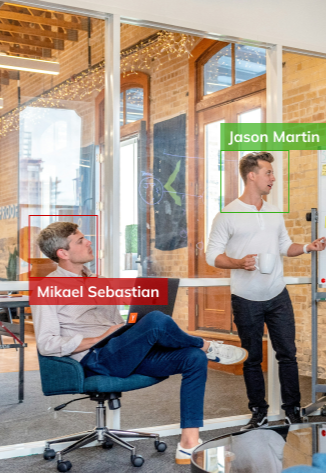The Facial Recognition Access Control System uses advanced biometric technology to grant access only to authorized personnel, enhancing security, reducing unauthorized entry, and ensuring safety compliance in construction sites and sensitive environments.
Authorized Person, Unauthorized Person, Black-listed Person, Unknown Person

Unauthorized access to secure areas poses significant risks, including theft, vandalism, and safety breaches. Traditional access control methods like keycards or passwords are susceptible to loss, theft, or sharing, leading to potential security vulnerabilities.
Manual security checks are time-consuming and prone to human error, which can lead to unauthorized individuals entering restricted areas unnoticed.
Failure to maintain strict access control measures can result in breaches of security regulations, leading to penalties, legal consequences, and damage to the organization’s reputation.

To address these challenges, we have implemented an AI-driven Facial Recognition System, seamlessly integrated with the NWarch AI platform. This solution uses state-of-the-art facial recognition algorithms to accurately identify and verify individuals in real-time.
Our system automatically scans and verifies faces of individuals attempting to enter secure areas, allowing access only to those who are authorized. The technology ensures that access credentials cannot be lost, stolen, or shared.
The system monitors access points continuously, instantly alerting security personnel if an unauthorized attempt is detected. This enables immediate action to prevent security breaches.
The system generates comprehensive access logs that track entries and exits, providing valuable data for auditing and security reviews. These logs help in identifying potential security threats and ensuring compliance with access control policies.
The Facial Recognition Access Control System integrates effortlessly with existing security infrastructures, providing a robust and unified approach to site security management
Variability in camera quality and distance may impact the precision of facial recognition. Poor lighting or occlusions (e.g., hats, masks) can hinder the system’s ability to accurately identify individuals.
Obstructions or multiple overlapping objects may hinder the system's ability to identify the person.
Processing large volumes of facial data in real time requires significant computational resources.
The system must be optimized for low latency to ensure quick and accurate access decisions.
Accurate differentiation between authorized and unauthorized individuals is critical to prevent security breaches or unwarranted access denials.
The system requires precise calibration to minimize false positives (wrongly denying access) and false negatives (failing to deny unauthorized access).
The implementation of facial recognition significantly improved adherence to access control protocols, reducing unauthorized access and enhancing overall site security.
Real-time facial recognition and alerts minimized the risk of unauthorized individuals entering secure areas, leading to a safer and more secure working environment.
The system’s ability to enforce strict access control protocols led to a notable decrease in security breaches and unauthorized entries.
By automating the access control process, the system allowed security personnel to focus on more critical tasks, improving overall site management and security operations.
Detailed access logs provided actionable insights that enabled management to refine security protocols, further improving access control measures and reducing risks.
This website uses cookies to improve your experience. We'll assume you're ok with this, but you can back-out if you wish.